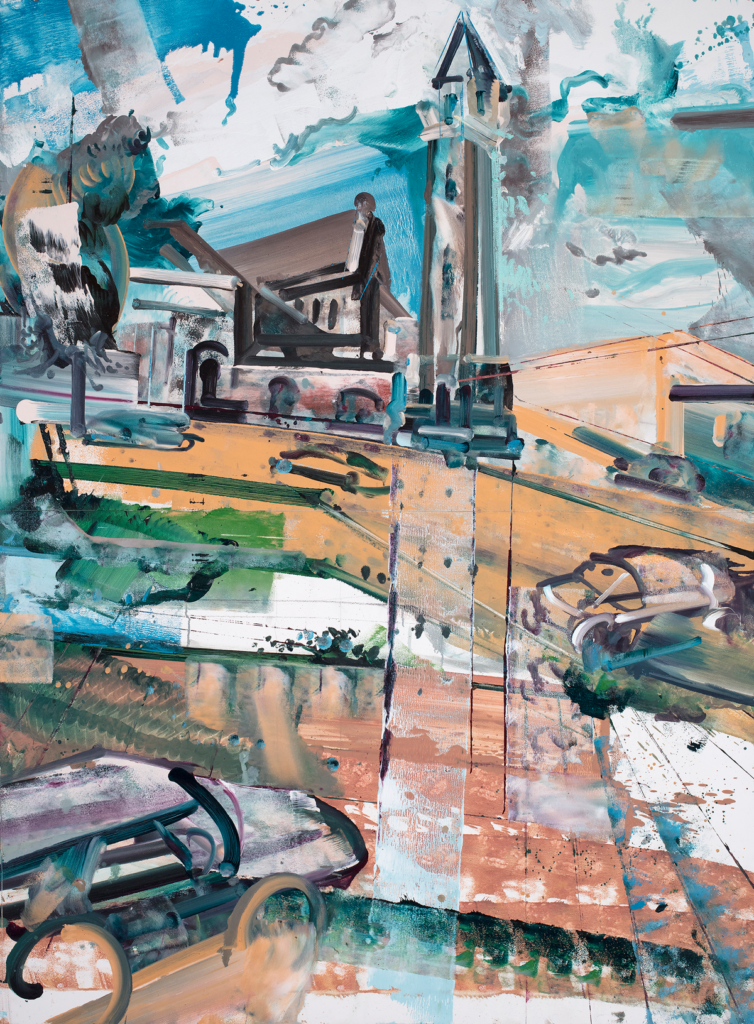
Three years ago, David Brewster was approached by the Maryland Historical Society to produce several paintings for an exhibition comparing Baltimore’s contemporary social issues to historical objects. Here, he explains the inspiration behind one of his cityscapes and how it’s related to Baltimore’s past and present.
“As a painter, I’m architectural in the way that I build forms. I grew up in the countryside of Maryland, and when I was a kid, I used to explore that countryside and crawl around in abandoned log cabins. They were these vernacular homesteads—those pioneer cabins—built throughout Maryland and Virginia in the 1800s. Now, most of them have deteriorated and vanished. I’ve always been interested in how to combine both manmade structures and nature in my paintings, and how to have a unified experience in our environment. When you see nature against the saturated bands of industrial color, nature just evaporates. It becomes so thoroughly muted. We live in an age where there’s a huge prejudice against landscape paintings. It’s like the genre is passé, but it couldn’t be further from the truth. As decades pass, we continue to occupy the world in new ways, impinging upon the sky and the earth with these weird, incongruous forms and colors. Our experience of the landscape has never been experienced this way before.
Campanile is an Italian word for the kind of tower that you frequently see throughout the villages of Italy. This painting is based on a real place in West Baltimore, which was at the heart of the riots two years ago. The church was probably built around the 1880s, and like so many of the churches in our country, it tried to emulate and embody European architectural examples. In the painting, I exaggerated the individuality of the tower, but it’s part of a whole church compound. I painted it on site, almost entirely with foam paint rollers, and it was like performance art. It was executed in one sitting. You can imagine what a spectacle it was, and I attracted a huge number of onlookers who passed by. For 30 seconds, my activity made them forget their daily lives and look at the world they occupy in an entirely different way. I’m taking something that is a reminder of poverty and vacancy, and making it beautiful by helping it to come alive again through the speed and magic of paint. Only art can do that. It breaks down all the barriers instantly.”

